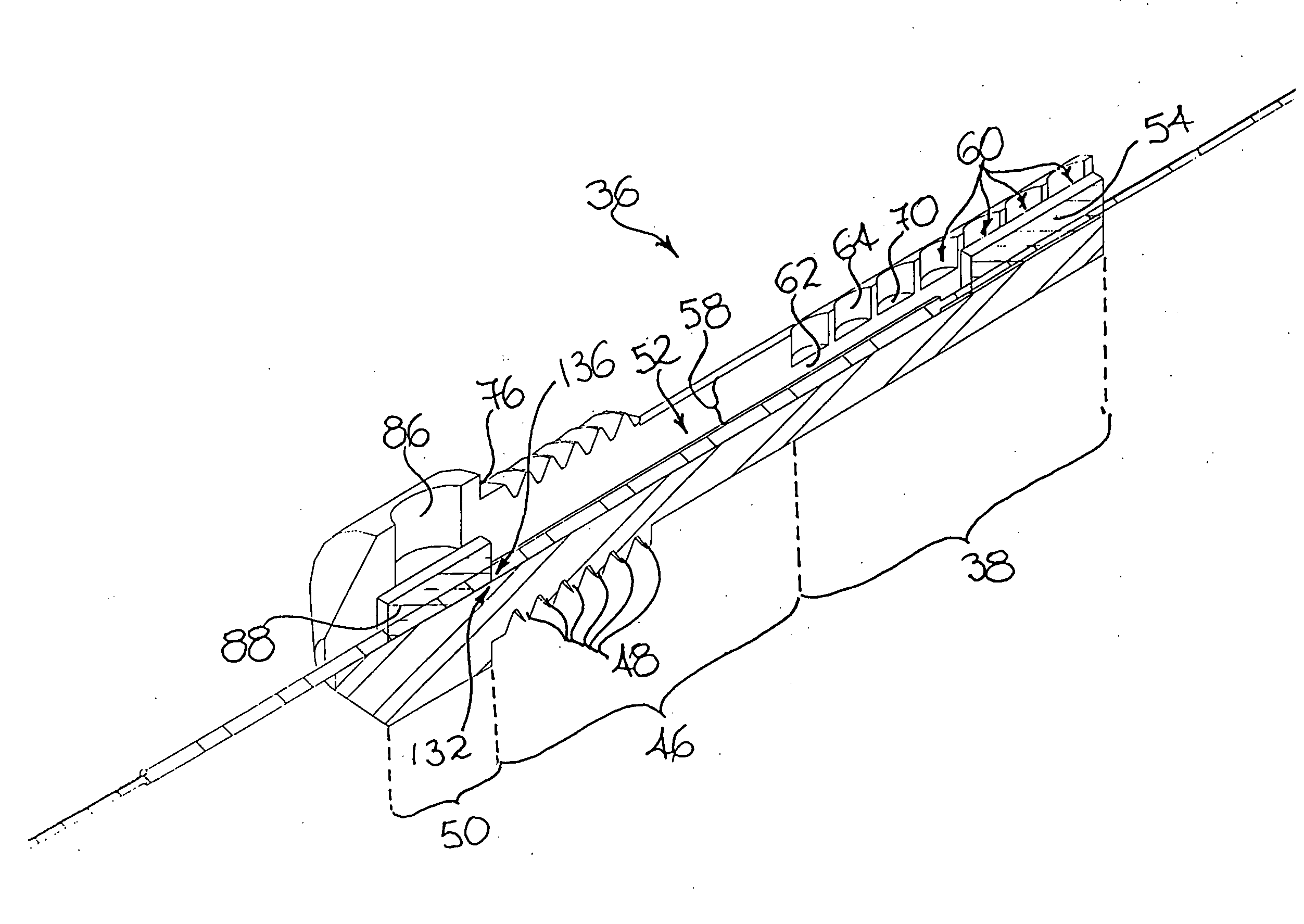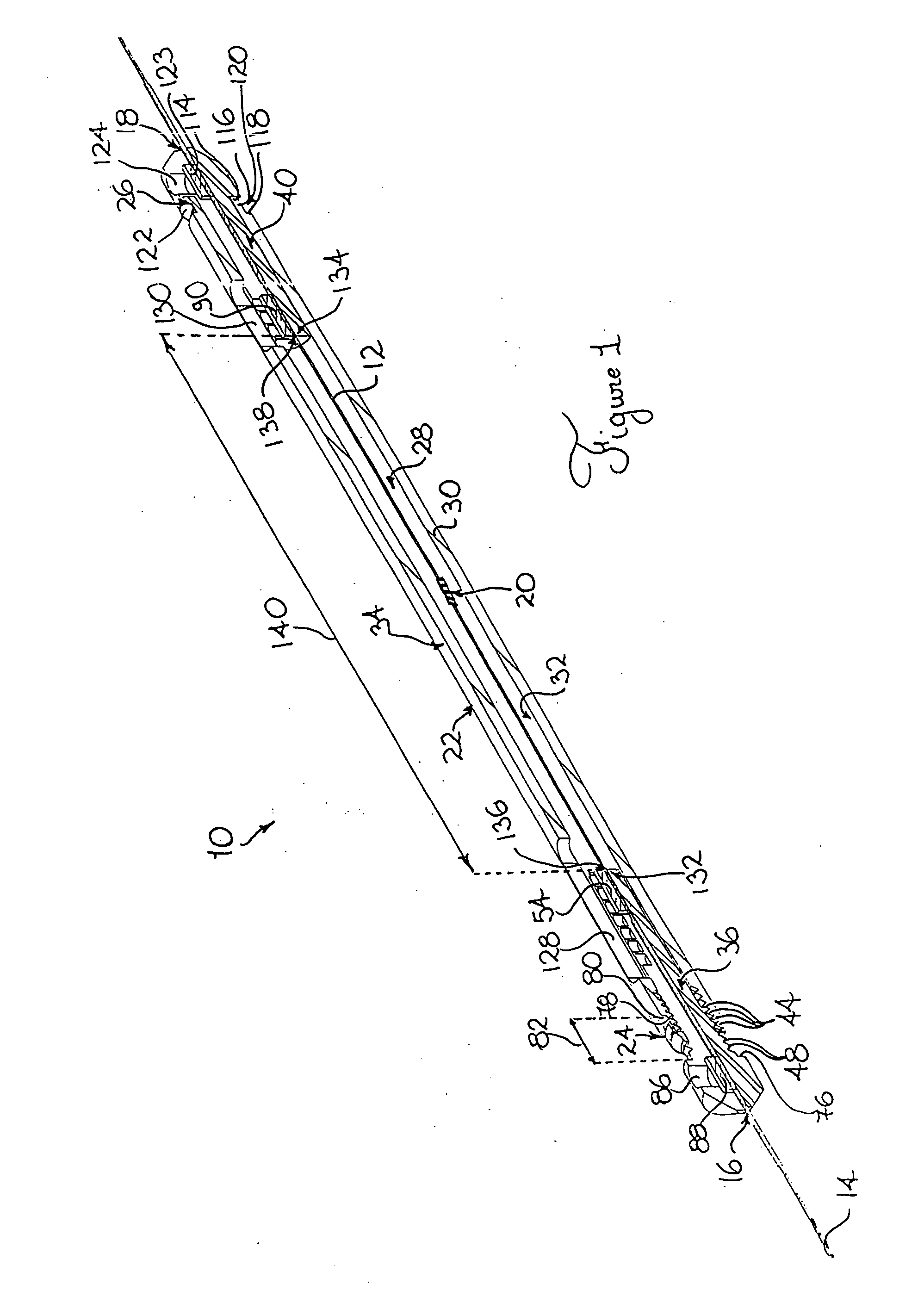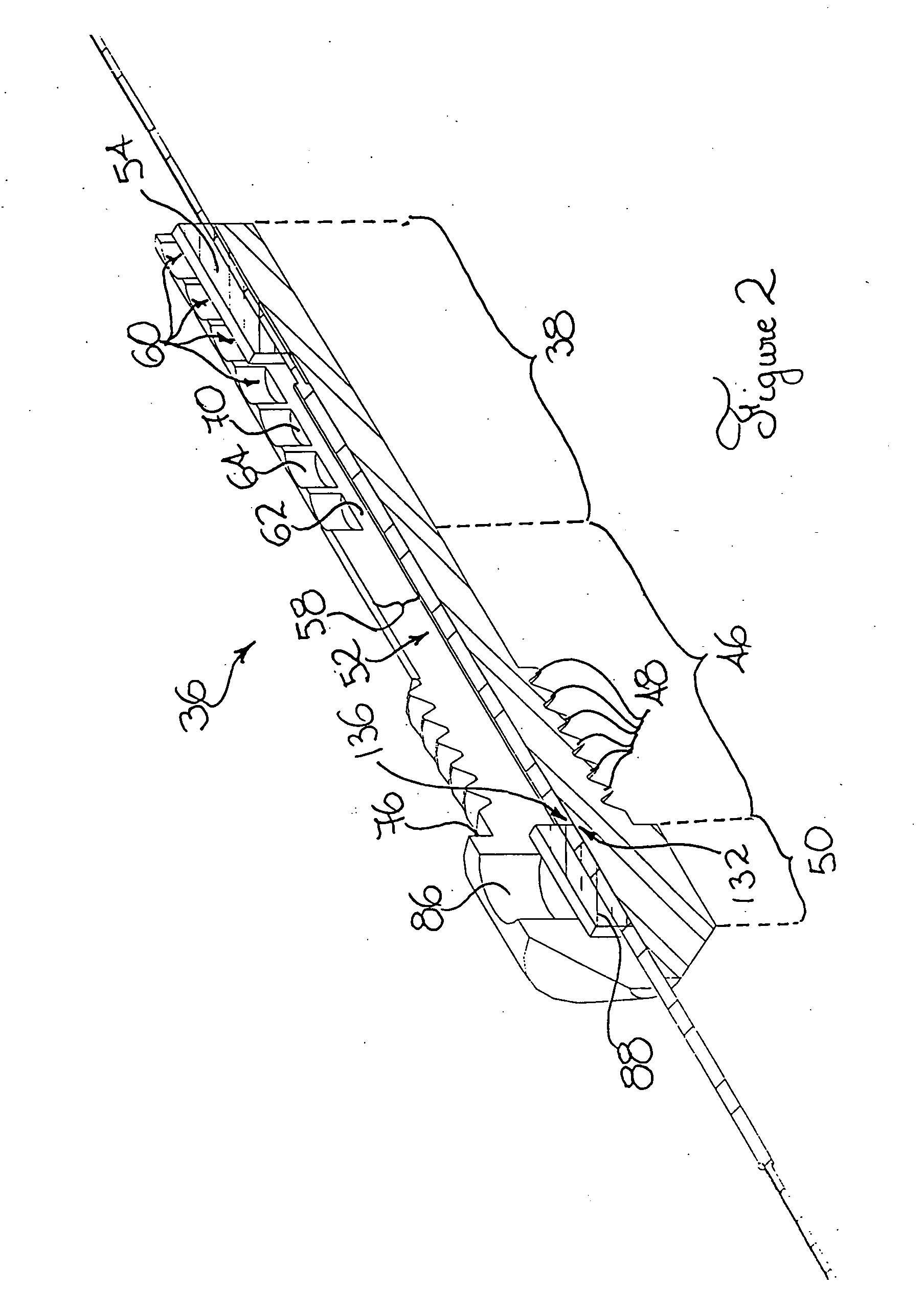The dependence of Bragg gratings to load induced stresses and often more importantly to temperature is however disadvantageous when the Bragg
grating is used in applications such as communication systems often requiring a good stability of the
spectral response thereof.
Indeed, as optical channel space becomes narrower for higher capacity communication systems, the requirements have become increasingly stringent for controlling and stabilizing the center wavelength of Bragg gratings.
Since commercial communication systems and advanced communication networks typically operate over an extensive range of temperature, the thermal dependence of Bragg gratings greatly limits their widespread use.
Intrinsic methods and devices have proven to be unsuitable for telecommunication applications wherein the
spectral response of each individual Bragg gratings must be stabilized against relatively small temperature fluctuations.
Although active thermal stabilization is relatively effective, it nevertheless suffers from severe drawbacks including costly implementation, potentially costly
power consumption and inherent complexity potentially leading to reliability problems.
However, the optical parameters vary slightly with temperature and, hence,
athermalization is only achieved at a given temperature around which the Bragg wavelength displays a generally parabolic variation with temperature.
Although, theoretically interesting, structure using materials having an intrinsic
negative coefficient of
thermal expansion suffer from numerous drawbacks including that suitable materials are relatively scarce or difficult to produce and, hence, relatively expensive Also, the coefficient of
thermal expansion of such materials needs to be precisely matched to the properties of the
optical fiber, hence requiring a precise control of the material formulation.
Furthermore, the coefficient of
thermal expansion of such materials needs to be relatively constant from one sample of material to another that may prove to be difficult to achieve in practice.
In other words, it is particularly difficult to provide a
negative coefficient of thermal expansion material that precisely compensates for temperature variations without any overcompensation or undercompensation.
One of the major drawbacks associated with conventional differential expansion-type temperature compensation structures relates to the fact that such structures are deprived of a suitable and reliable means for adjusting the value of the Bragg wavelength.
Although the structure disclosed in the hereinabove-mentioned
patent application publication provides some improvement over other prior art devices by incorporating relatively fine-tunable resonant wavelength adjustment means, it nevertheless suffers from other drawbacks.
One of these drawbacks is the inherent interdependency between the adjustment of the tension imparted on the fiber and a corollary adjustment of the spacing between the anchor points.
The inability to allow for independent adjustment of the Bragg wavelength and of the wavelength excursion by temperature change may prove to be unsatisfactory in numerous situations.
For example, some components such as certain types of GFFs only allow for a relatively small margin of error for both the tuning of the Bragg wavelength and athermicity.
Consequently, in situations such as when the coefficient of thermal expansion of the materials varies from one structure to another or when the structure needs to be manufactured using materials exhibiting coefficients of thermal expansion different from that for which the device has been designed or used, the displacement range of the thread may prove insufficient to allow for adequate tuning or, alternatively, the threaded portion of the threaded member may need to be oversized in order to allow for adequate tuning.
This, in turn, may lead to potentially inacceptable increases in the overall size of the structure.
The structure disclosed in U.S.
Patent Application Publication No. 2002 / 0141700 A1 also suffers from failing to provide a means for ensuring precise, ergonomic and reliable positioning of the attachment components used for fixing the fiber to the members about the anchoring points during
assembly.
Since the performance of the structure is highly dependent on the
repeatability of the manufacturing process, this may prove to be a major drawback.
As a result, more stringent manufacturing is required thus leading to reduced yields and limited performance.
In addition, the design of the above-mentioned device does not afford a post-manufacturing adjustment to accurately tune the response of the
grating to precisely and repeatably achieve the desired
temperature sensitivity specifications.
Although the device disclosed in U.S. Pat. No. 6,377,727 allows for customization of the spacing between the fiber anchoring points, it fails to teach and, in fact, teaches away from providing a means for adjusting the spacing between the anchoring points and, hence, the tension within the fiber once the fiber is anchored to the structure.
Hence, this structure also fails to provide means for allowing independent adjustment of both the central wavelength and the wavelength excursion per temperature differential.
The structure also suffers from failing to provide a means for allowing accurate, ergonomic and reliable attachment of the fiber to the structure about the fiber anchoring points.
 Login to View More
Login to View More  Login to View More
Login to View More 


